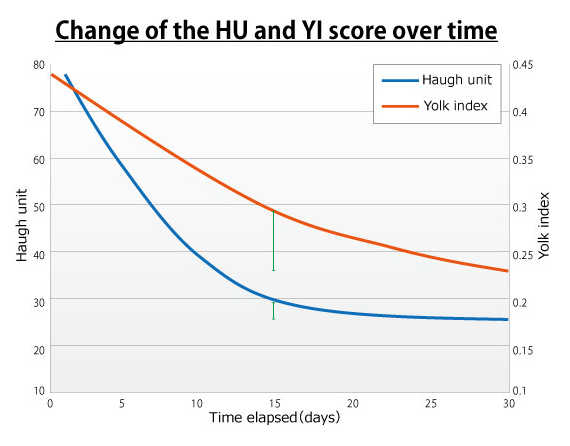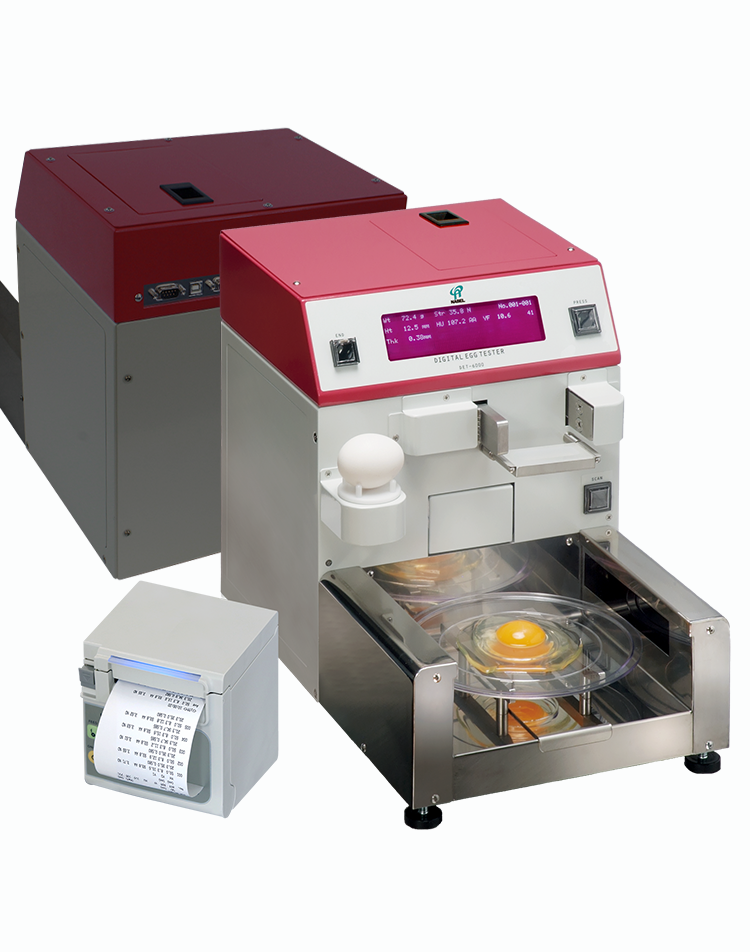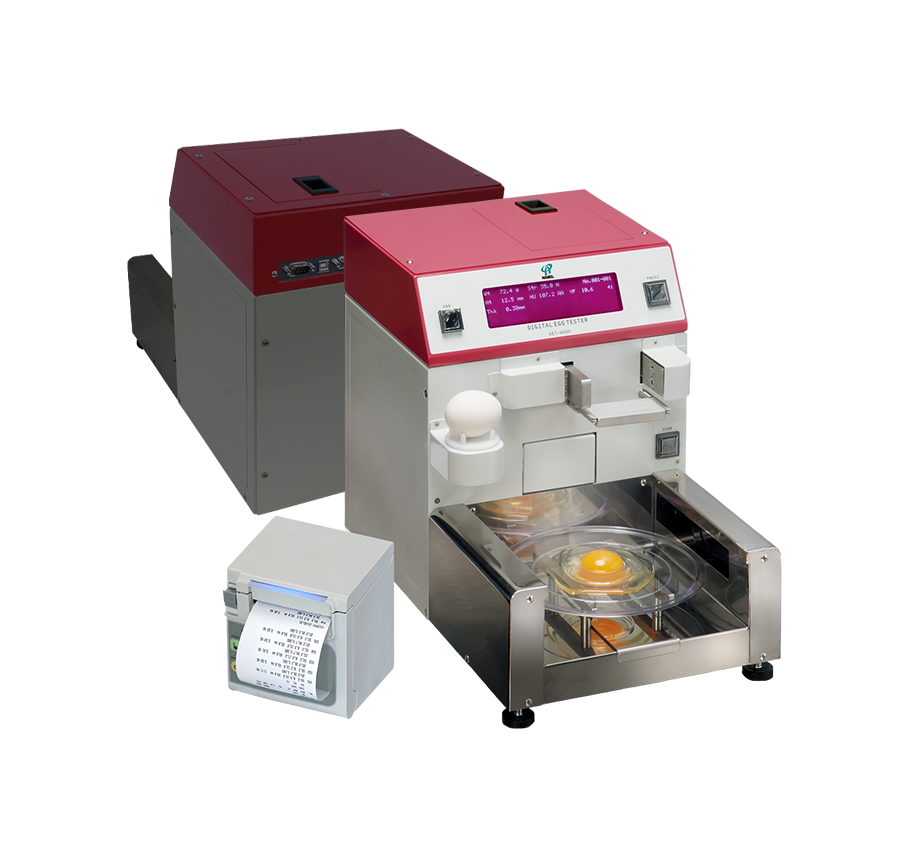Egg Quality
The Haugh unit and the yolk index are the main indicators to measure the egg quality. Digital Egg Tester automatically calculates and displays both HU and YI scores.
Haugh unit
The Haugh unit indicates egg quality as conceived by Dr. Raymond Haugh in 1937. The height of the thick albumen surrounding the yolk, combined with the egg weight, determines the Haugh unit score. The higher the score, the better the egg quality.
The Haugh unit score is calculated by the following formula: the thick albumen height of the egg broken onto a flat surface combined with the egg weight.
HU: Haugh unit H: Albumen height W: Egg weight
HU=100 x log (H-1.7W0.37+7.6)

NABEL investigated the distribution (%) of Haugh unit categories in 23,093 commercially produced eggs measured the day after packing. Although almost half of the eggs had values ranging from 80 to 90, 1 out of 1,000 had almost no thick albumen.
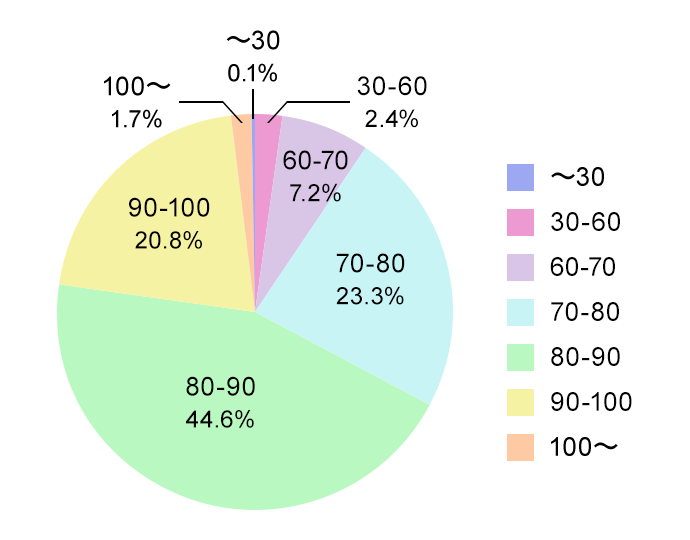
NABEL's Digital Egg Tester automatically calculates and displays the Haugh unit score with the ranking determined by the indicator of the United States Department of Agriculture (USDA).
| Ranking : | AA (HU72.0~) A (HU 60.0~71.9) B (HU 31.0~59.9) C (HU ~30.9) |
|---|

Yolk index
The yolk index is calculated by dividing the yolk height by the yolk diameter of the egg broken onto a flat surface. It was used as an egg quality indicator in the 1930s. As egg deterioration progresses, the yolk index score becomes lower because the fiber structure of the vitelline membrane loosens and the membrane strength decreases over time.
The yolk index score is calculated by the following formula: the height of the egg yolk broken onto a flat surface combined with the diameter.
YI: Yolk index YH: Height of egg yolk YD: Diameter of egg yolk
YI=YH/YD
Data obtained by the manual and digital measurements is compared, using various egg types with various freshness levels. The manual measurement uses an egg quality device or a vernier caliper, and the digital measurement uses Digital Egg Tester.
The results obtained by the manual and digital measurements show that a strong correlation exists between the Haugh unit and the yolk index, proving the high credibility of Digital Egg Tester measurement.
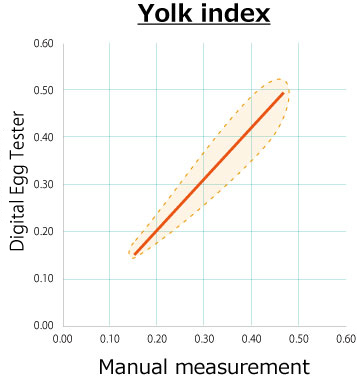
The graph below shows the change of the yolk index score at different temperatures. The storage temperature affects the egg freshness. Eggs stored at a low temperature remain fresh for a long time.
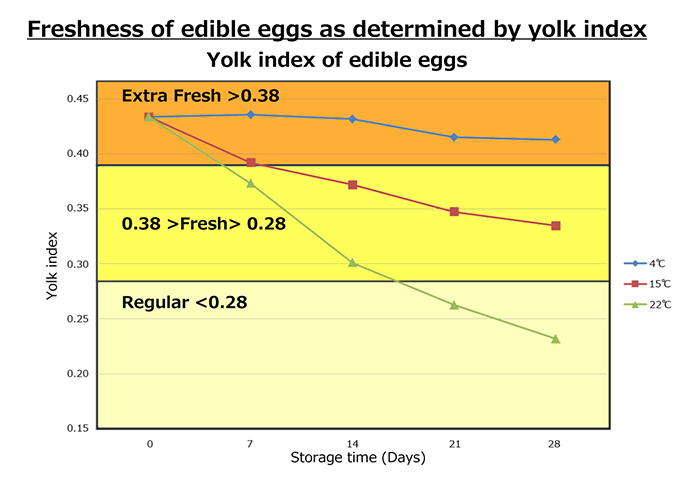
The reason for using the yolk index
The Haugh unit score declines rapidly with the passage of storage time; therefore it can sensitively quantify the egg deterioration at the early stage after being laid. However, the yolk index score declines slowly with the passage of the storage period, enabling the detection of quality differences even among degraded eggs.
